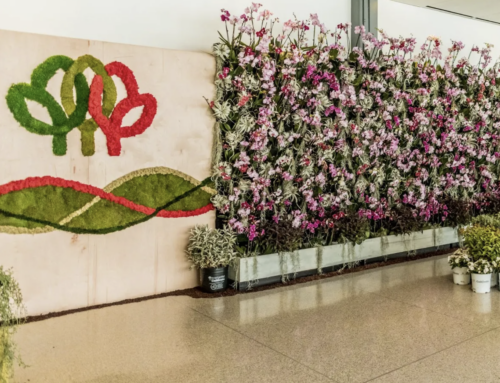Repackage perennials with updated verbiage, and even packaging considerations, to strengthen your products’ appeal. By repackaging your plants, you also open up your potential for sales.
1. Repackage Perennials For Small Spaces
Since more and more people live in metropolitan areas, smaller living spaces are also becoming more common. So, people are looking for space appropriate plants. This includes balcony-ready items. Mentioning the perennial’s flexibility in environment plays an important role on the product’s label.
2. Birds
Various kinds of birds, not just hummingbirds, are attracted to plants. Customers may or may not know that wrens, bluebirds, chickadees, vireos and many others are attracted to perennials. So, instead of making assumptions, simply mention this information. It’s an enticing reason to take the plant home. So, by incorporating value point graphics you include the idea without it taking up space.
3. Butterflies
With spring comes butterflies emerging from their cocoons. Eupatorium, asclepias and echinacea are three examples of plants that attract butterflies. Include a special butterfly logo to communicate that butterflies frequent these plants. It’s an informative option that also doesn’t take up too much space on the label.
4. Rephrase For Appeal
Is your perennial a butterfly attracting perennial or deer repelling perennial? This phrasing is much more descriptive and appealing to customers than simply putting “perennial” on your label. Or, offer more about this topic in a booklet-style label.
5. Environmental Wording
It may not seem like much, but where green living is concerned, a lighter, or positive, approach may be the more successful approach. For example, calling your plant “water-wise” uses stronger phrasing than “drought-tolerant.” Herbs like lavender, thyme, grasses, sedums and coreopsis can utilize this simple switch.
6. Food
Perhaps correlating with the increasing popularity of small spaces, versatility in plants also include produce. Ornamentals that double as food is worth hilighting in your packaging or on your label, just like herbs.
7. Fragrance
Repackage perennials to highlight fragrance as a factor that engages the senses. For those also looking to add natural fragrance to their gardens or homes, crating a half a dozen package fragrant plants like herbs, agastache, phlox and even violas may assist with sales. This also works in correlation with promoting sensory gardens.
8. Design
Since designers and gardeners alike look for different things than a first-time planter or casual grower, package groundcovers and meadow plants together. It provides a place to start for the less experienced green thumb.
9. Length of Bloom
If people know the bloom will last a long time, even solely based on the label indicators, they’ll be intrigued. Perennials such as salvias, coreopsis and even evening primrose are more marketable this way.
10. Native Plants
Native plants are highly marketable, especially to environmentally thoughtful gardeners, so provide your customers with insight as to where your plants were grown. Instead of exciting customers with new plants that need extra care, show them the benefits of buying local, and traditionally. However, don’t eliminate exotic products entirely.
Learn about the labeling and automation solutions that Label Gator offers. See how you can even save time, money and labor with our Product Guide. Click here to download the guide.
Connect with us on social media!





